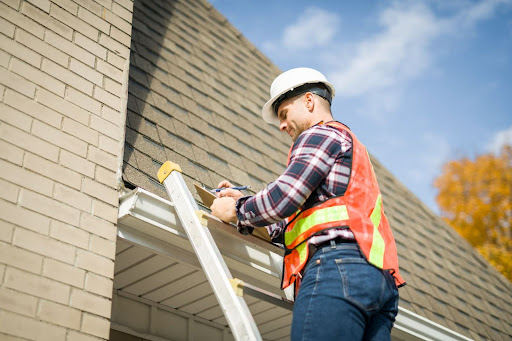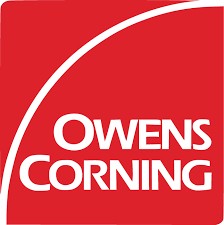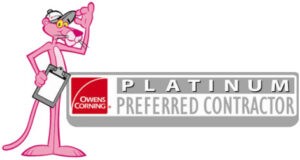If you’re tired of high energy bills and rooms that never feel the right temperature, your roof might be to blame. Yes, a new roof can absolutely help with heating and cooling. By increasing your home’s energy efficiency, it can reduce heat gain in the summer, cut heat loss in the winter, and lower your energy bill by 10% to 40%, depending on the materials you choose and the current condition of your roof.
Your roof plays a key role in how your home handles temperature changes. With today’s modern roofing materials and smart ventilation systems, your home can stay more comfortable year-round. In this post, we’ll explain how roofs affect indoor temperatures, what materials can improve energy savings, how proper installation matters, and what kind of financial benefits you can expect.
How Your Current Roof Affects Energy Costs
Your roof is like a shield between your home and the outside world. But if it’s old or in poor shape, it may be letting energy escape or unwanted heat in. Here’s how:
Conduction, Convection, and Radiation: Heat travels into your home in different ways. In the summer, sunlight heats the roof surface. That heat transfers down into your attic and living space. In the winter, warm air rises and escapes through an old roof.
Air Leaks: Gaps or cracks in roofing materials let air in and out, causing your HVAC system to work harder. This can lead to higher utility bills and uneven indoor temperatures.
Poor Roof Ventilation: Without proper roof ventilation, hot air can get trapped in your attic, making it harder to cool your home. In the winter, warm, moist air can rise into the attic and, without proper ventilation, that moisture can build up and damage insulation.
Surface Temperature: Traditional roofing materials like asphalt shingles can reach over 150°F in the summer, which radiates heat into your home. Energy-efficient alternatives stay cooler and reduce that heat transfer.
Real-life Impact: When an HVAC system has to compensate for an old roof full of air leaks, it can significantly increase energy consumption. A poorly insulated and ventilated roof not only affects your comfort but also your wallet.

Energy-Efficient Roofing Materials and Technologies
Let’s look at roofing material options that can help your home stay cooler in the summer and warmer in the winter.
- Reflecting Solar Heat: Cool roof materials are designed to reflect more sunlight and absorb less heat than a conventional roof. This reduces heat gain and makes a big difference in warmer climates.
- Color and Coating Options: Light-colored shingles or reflective coatings can reduce roof surface temperatures by 50°F or more.
- Energy Savings: Homes with cool roofs can see up to 15% savings on cooling costs.
Premium Roofing Material Options
- Modern Roofing Materials: Newer options often include built-in insulation layers or reflective coatings that block heat transfer more effectively. These materials may be made from metal, synthetic polymers, or advanced composite shingles designed to reflect solar energy and provide better insulation.
- Traditional vs. Modern: Traditional materials like asphalt shingles or untreated wood tend to absorb more heat and offer less insulation. In contrast, modern roofing materials are engineered to reflect sunlight, resist heat absorption, and reduce energy loss. This makes them better at regulating indoor climates and boosting energy efficiency throughout the year.
Innovative Solutions
- Green Roofs: These living roofs add a layer of plants that insulate and cool naturally. A green roof can reduce a building’s energy usage and provide added insulation.
- Solar Panels: When integrated with a well-insulated roof, solar panels can produce energy while also shading your home from solar heat.
- Combining Benefits: Pairing solar energy with energy-efficient roofing creates a powerful solution for lowering energy bills.
Depending on your climate and roofing material choice, you could see surface temperature drops of 30°F to 60°F and meaningful reductions in energy usage.

Proper Installation Factors That Maximize Energy Benefits
Even the best roofing material won’t help much if the roof isn’t installed correctly. Here are the key factors that influence how well your roof helps with heating and cooling:
Ventilation Systems
- Why It Matters: Proper ventilation allows heat and moisture to escape, which helps control your home’s temperature and reduces cooling costs.
- Types of Vents: Ridge vents and soffit vents improve airflow and prevent hot air from getting trapped in the attic.
Using Insulation
- Better Insulation: Upgrading insulation during a roof replacement is a smart move. This includes working with attic insulation and selecting the right insulation materials.
- Well-Insulated Roofs: These keep warm air in during winter and block heat in the summer, helping you maintain a more comfortable temperature indoors.
Professional Installation Standards
- Preventing Air Leaks: A quality installer will seal all gaps and seams to prevent unwanted air exchange.
- System Integration: Good contractors coordinate roof upgrades with your HVAC and geothermal heat pumps to maximize performance.
When all these elements work together, the result is a home that stays at a stable indoor temperature with less effort and energy.
Energy Savings and Climate-Specific Benefits
A new roof is a big investment, but it can lead to significant savings on energy bills and offer climate-specific benefits depending on where you live.
Savings You Can See
A new roof with energy-efficient materials can lower your energy bill by 10% to 40%, depending on your home’s current setup. The typical payback period for these roofing upgrades is about 5 to 7 years. This means that over time, your savings can completely offset the cost of installation. Many homeowners notice a sharp drop in cooling costs during summer once they replace an old roof with energy-saving materials.
Whether you’re replacing a roof that has air leaks or switching from asphalt shingles to more efficient options, the financial difference can be significant. Plus, energy-efficient roofs can add value to your home when it’s time to sell.
Climate-Specific Benefits
The benefits of a new roof also depend on where you live in the United States:
- In warmer areas, cool roof materials can reflect solar heat, keeping your home cooler and reducing the need for air conditioning. This is especially helpful in regions with long, hot summers.
- In cooler climates, better insulation and fewer air leaks mean less heat escapes your home, reducing the strain on your heating system. This results in more stable indoor temperatures during the winter.
Choosing the right roofing solution for your region ensures you get the most out of your energy-saving investment.
Ready to Take the Next Step?
Understanding the energy-saving potential of a new roof is the first step. The next step is working with a roofing contractor who knows how to get the job done right.
Why Work with Leverage Roofing?
If you’re thinking about a new roof, choosing the right team makes all the difference. At Leverage Roofing, we specialize in energy-efficient roofing solutions designed to lower your energy bill and improve indoor comfort. With over 30 years of experience serving homeowners across the Carolinas, we know how to install high-performing roofs built to last.
Our services include:
- Residential roof replacement using energy-efficient materials and ventilation upgrades
- Commercial roofing solutions for a variety of roofing systems, including metal and flat roofs
- Storm damage roof inspections and fast repair or replacement services
- Asphalt shingle and metal roof installation with attention to long-term performance
Whether you’re facing an old roof with air leaks or want to switch to a more energy-efficient roof, we’re here to help. Contact Leverage Roofing today for a consultation and see how a new roof can improve your home’s comfort and energy savings.


